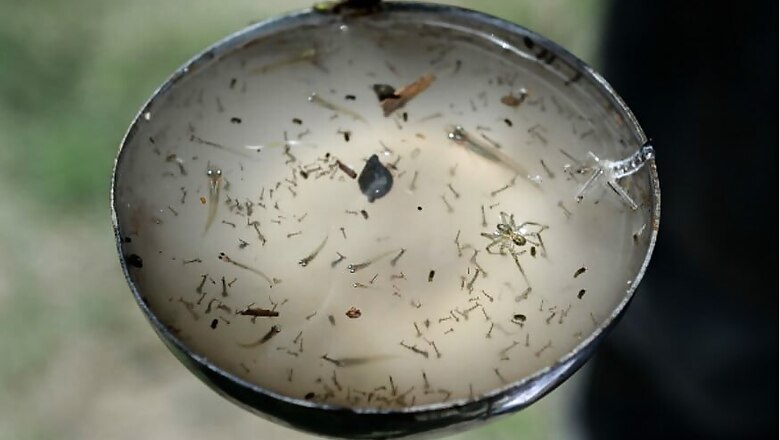
views
Under the Tandarust Punjab Mission, the Anti-larva Cell of the Health Department carried out a drive against vector-borne diseases in Jalandhar on Wednesday. The members of the team detected 26 dengue larvae cases from various places.
Centers for Disease Control and Prevention (CDC) estimates that 400 million people are infected each year. Around 2.5 billion people, or 40 percent of the world's population, live in areas where there is a risk of dengue transmission.
The dengue virus (DEN) comprises four distinct serotypes (DEN-1, DEN-2, DEN-3 and DEN-4) which belong to the genus Flavivirus, family Flaviviridae.
Distinct genotypes have been identified within each serotype, highlighting the extensive genetic variability of the dengue serotypes. Among them, “Asian” genotypes of DEN-2 and DEN-3 are frequently associated with severe disease accompanying secondary dengue infections.
The Tribune reported that separate teams carried out the checking at Jyoti Nagar, Kishanpura, Madhuban Colony, Shaheed Babu Labh Singh Colony, Rattan Nagar, Gandhi Camp and Gazigulla.
The teams visited 531 houses, covered the population of 2,026 and checked 184 desert coolers and 606 waste containers, as reported by the Tribune. The members of teams told residents that the desert coolers and containers could act as a breeding ground for the mosquitoes to spread diseases like dengue and malaria.
WHO says that once infected, humans become the main carriers and multipliers of the virus, serving as a source of the virus for uninfected mosquitoes. The virus circulates in the blood of an infected person for 2-7 days, at approximately the same time that the person develops a fever. Patients who are already infected with the dengue virus can transmit the infection via Aedes mosquitoes after the first symptoms appear (during 4-5 days; maximum 12).
In humans recovery from infection by one dengue virus provides lifelong immunity against that particular virus serotype. However, this immunity confers only partial and transient protection against subsequent infection by the other three serotypes of the virus. Evidence points to the fact that sequential infection increases the risk of developing severe dengue. The time interval between infections and the particular viral sequence of infections may also be of importance.



















Comments
0 comment